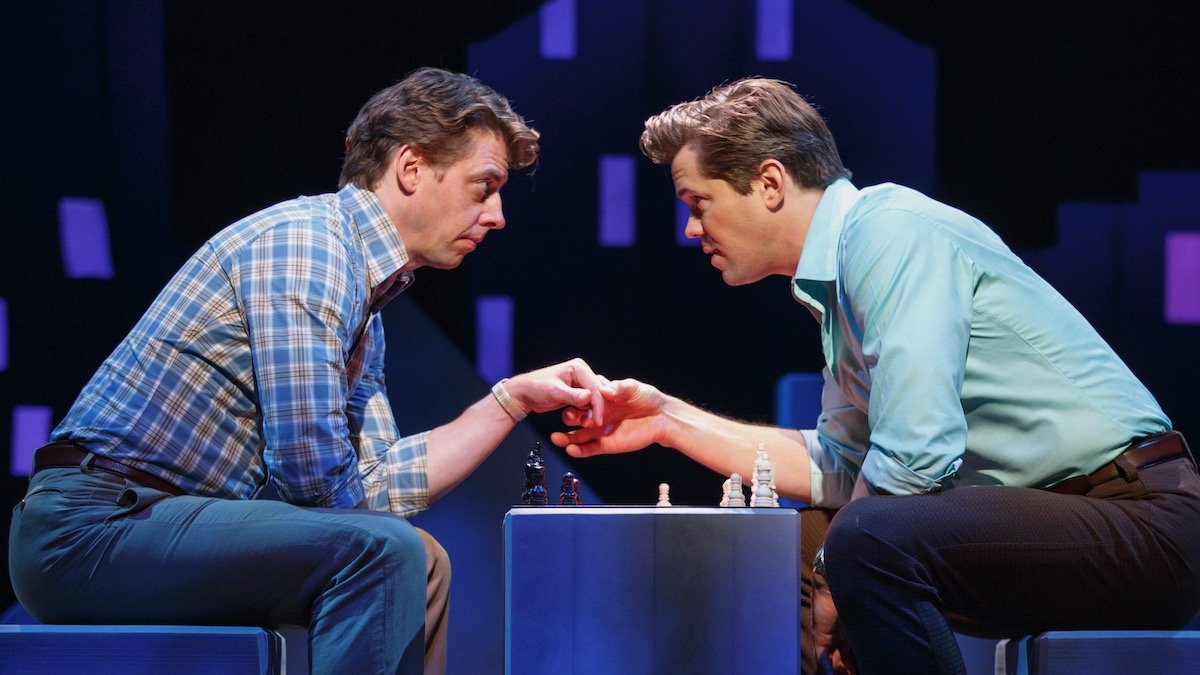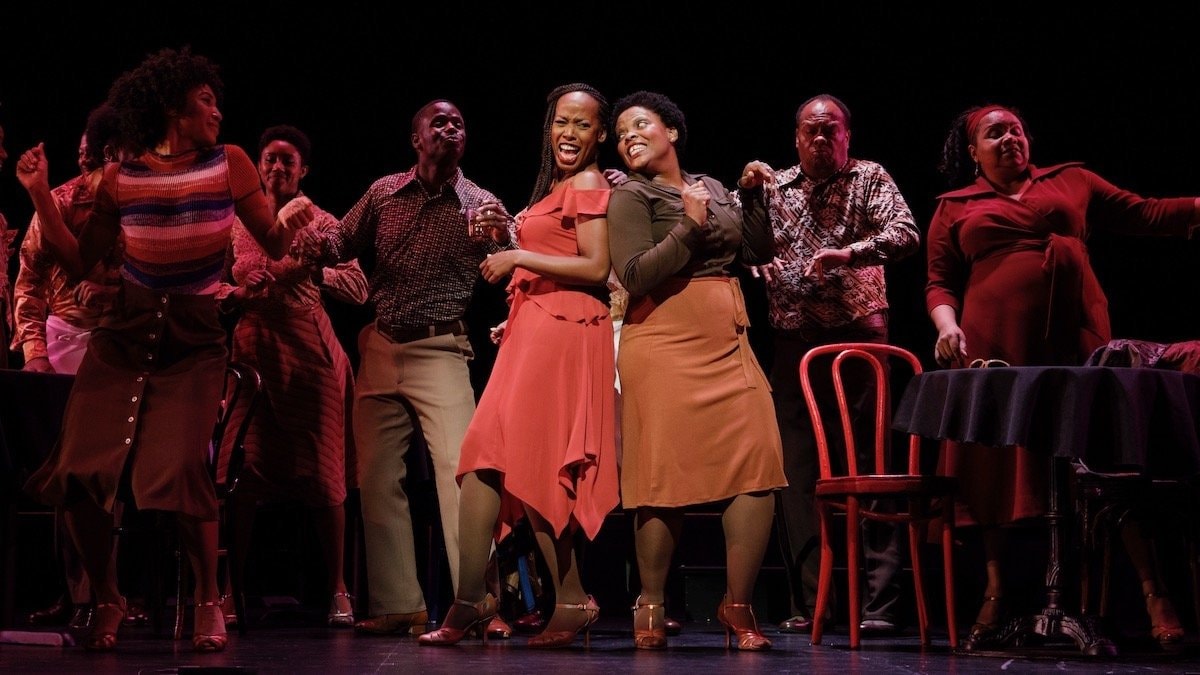
When William Finn first created Marvin, the charming, conflicted, neurotic husband and father at the center of Falsettos, he had no idea the character would appear in four musicals. Marvin was simply a vessel for Finn’s songs.
In Trousers (1979)
After graduating from Williams College with a music degree, Finn moved to New York City, where he wrote songs and sang them with his friends Alison Fraser, Mary Testa and Joanna Green. Eventually, he decided to assemble some of the songs into a theatrical event. The resulting show, In Trousers, is a vibrant, eccentric, loosely plotted musical about a young man named Marvin and the three women in his life: his high school girlfriend; his teacher, Miss Goldberg; and his wife Trina, whom he leaves for a man named Whizzer Brown. The four-character show (Whizzer is mentioned but never seen) was first workshopped in 1978 with Finn in the lead role. In 1979, it opened off-Broadway at Playwrights Horizons, featuring Chip Zien as Marvin, along with Fraser, Testa and Green.
“A lot of the material was about my learning to write the kind of show songs I want to write,” Finn later wrote. “So, the show is about Marvin’s education, and mine.”
Despite its contemporary sound and quirky humor, In Trousers failed to impress the critics, so Finn immediately set out to write a new musical. “If the critic for the Times at that time had been more responsible, it would have been a considerable debut,” he later told Joe Brown of The Washington Post. “But as it was, he just said it was junk. So, I just started writing March of the Falsettos.”
March of the Falsettos (1981)
A one-act, 5-character book musical, March of the Falsettos explores the world of a modern Jewish family through a dizzying array of hilarious, idiosyncratic and heartbreaking songs. Premiering off-Broadway at Playwrights Horizons on May 20, 1981, the 90-minute show presents a slightly older Marvin, desperately trying to manage the emotional aftermath of his choice to leave his wife for a man. Navigating rocky relationships with his overextended ex-wife, Trina; his handsome lover, Whizzer; his precocious son, Jason; and his eccentric psychiatrist, Mendel, Marvin eventually takes a tiny step toward maturity, embracing his responsibility as a father.
With book, music and lyrics by Finn, the show is considerably more sophisticated than In Trousers, with clearly drawn characters, clever situations, and that unmistakably original Bill Finn sound. Michael Rupert assumed the role of Marvin, with Chip Zien switching over to play Mendel. Finn’s old pal Alison Fraser returned as Trina, Stephen Bogardus (who had briefly played Marvin in In Trousers) played Whizzer, and James Kushner was Jason.
Frank Rich of The New York Times called the show “funny and tender on its own contained, anecdotal terms” and said, “The songs are so fresh that the show is only a few bars old before one feels the unmistakable, revivifying charge of pure talent.”
March of the Falsettos concludes satisfyingly, with Marvin and Whizzer separated, Trina and Mendel together, and Jason on the cusp of adolescence. The Marvin saga could have ended there, and it might have, if events in the real world hadn’t taken a dramatic turn.
Falsettoland (1990)
In the years following the premiere of March of the Falsettos, AIDS devastated New York’s gay community, taking a particularly destructive toll on the performing arts. Finn knew he couldn’t ignore the AIDS crisis. “At the time, I couldn’t write about anything else,” he later told Playbill. “I couldn’t not write about it. It was so much a part of all of our lives.”
Since he’d already invented a dynamic and emotionally complex world, Finn collaborated with director/librettist James Lapine to revisit Marvin and his family as they experienced the anguish and heartbreak of AIDS. March of the Falsettos had presented a group of neurotic, funny, occasionally petty and often selfish Americans before AIDS; in Falsettoland, they’d all be forced to grow up. As Marvin sings in the opening number, “It’s about time to grow up and face the music.”
Though it picks up one year after the events of March of the Falsettos, Falsettoland opened nine years later, on June 28, 1990. Like its two predecessors, the musical premiered off-Broadway at Playwrights Horizons.
In Falsettoland, Jason prepares for his bar mitzvah, Trina and Mendel adjust to married life, and Marvin and Whizzer reunite just before Whizzer develops what would later be called AIDS. Finn and Lapine added two characters for this musical: a doctor named Charlotte and her partner, a caterer named Cordelia – the “lesbians from next door.”
Deeper, more focused and more moving than its prequel, the show left many theatregoers in tears, particularly after soaring ballads like “Unlikely Lovers” and “What Would I Do?” It also wowed the critics, winning the Lucille Lortel Award for Outstanding Musical, the Drama Desk Award for Outstanding Lyrics, and the 1991 Outer Critics Circle Award for Best Off-Broadway Musical.
The cast was mostly familiar; the three adult males from March of the Falsettos returned, with Faith Prince playing Trina and Danny Gerard as Jason. Heather MacRae and Janet Metz originated the roles of Charlotte and Cordelia.
Falsettos (1992)
Marvin and his family finally made it to Broadway in 1992. A combination of the two one-act musicals was inevitable, and Graciela Daniele first experimented with the pairing in a well-received 1991 production at the Hartford Stage Company. The resulting two-act musical, retitled Falsettos, premiered at the John Golden Theatre on April 29, 1992, under the direction of James Lapine. With slight trims to each of the acts, the full-length musical packed an emotional punch, feeling both funnier and more emotionally satisfying than either of the one-acts. The production was groundbreaking; Broadway audiences had never seen such a forthright, unapologetic representation of three-dimensional gay characters.
Frank Rich wrote, “The two Falsetto shows, fused together on a single bill, form a whole that is not only larger than the sum of its parts, but is also more powerful than any other American musical of its day.”
Featuring most of the Falsettoland cast, with the addition of Barbara Walsh as Trina, Carolee Carmello as Cordelia and Jonathan Kaplan as Jason, the show was nominated for seven Tony Awards, winning those for Best Book and Best Original Score.
Falsettos eventually returned to Broadway in 2016. The Tony-nominated revival starred Christian Borle, Stephanie J. Block, Andrew Rannells and Brandon Uranowitz, and was filmed and adapted for PBS Live from Lincoln Center.
When William Finn and friends first started singing songs together in the late 70s, they could hardly have imagined that the characters they were creating would someday appear on a Broadway – and later, a global – stage. Finn, and Marvin, had come a long way.
To license a production of In Trousers, March of the Falsettos, Falsettoland or Falsettos, visit ConcordTheatricals.com.

The Truth Behind… The Normal Heart

Musical Revues

